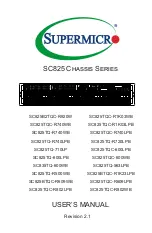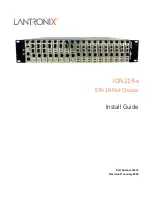
1261B User Manual
Racal Instruments
Ó
1995
Using The Enhanced Monitoring System 4-41
where:
ESE is the value as set by the *ESE command
ESR is the value which may be read with *ESR? query
Bit 5 of the Status Byte is also known as the “Event Summary
Bit”, or ESB. The *ESE command has the format:
*ESE <ESE value>
where the “<ESE value>” is an integer numeric value in the
range 0 to 255
*ESE? Query
This query reads the value presently programmed for the
“Standard Event Status Enable Register”. This reads the value
as programmed by the “*ESE” command.
*ESR? Query
This query reads the value of the “Standard Event Status
Register”. Each bit of this register indicates a true/false status
condition. When the bit is set, the condition is TRUE; when the
bit is cleared, the condition is FALSE. The bit assignments are
defined by the IEEE-488.2 specification. The bit assignments
are as follows:
Bit 0 -
Operation Complete. This bit is set when the *OPC
command is sent and has been executed.
Bit 1 -
Request Control. This bit is always 0 for the 1261B EMS.
Bit 2 -
Query Error. This bit is set when the EMS parser has
detected a query error condition, as defined by the IEEE-
488.2 specification.
Bit 3 -
Device Dependent Error. This bit is set when the EMS has
detected a Device Dependent error, such as an internal
conflict or a self-test failure at power-on.
Bit 4 -
Execution Error. This bit is set when the EMS has attempted
to execute a command but the command could not be
executed successfully.
Bit 5 -
Command Error. This bit is set when the EMS receives a
command it does not recognize.
Bit 6 -
User Request. This bit is always 0 for the 1261B EMS.
Bit 7 -
Power On. This bit is set when the AC line power switch is
turned on.
The bits of the Standard Event Status Register are cleared after
this query has been executed. The reply to the *ESR? query is a
numeric integer value in the range “0" to “255".
Artisan Technology Group - Quality Instrumentation ... Guaranteed | (888) 88-SOURCE | www.artisantg.com






































